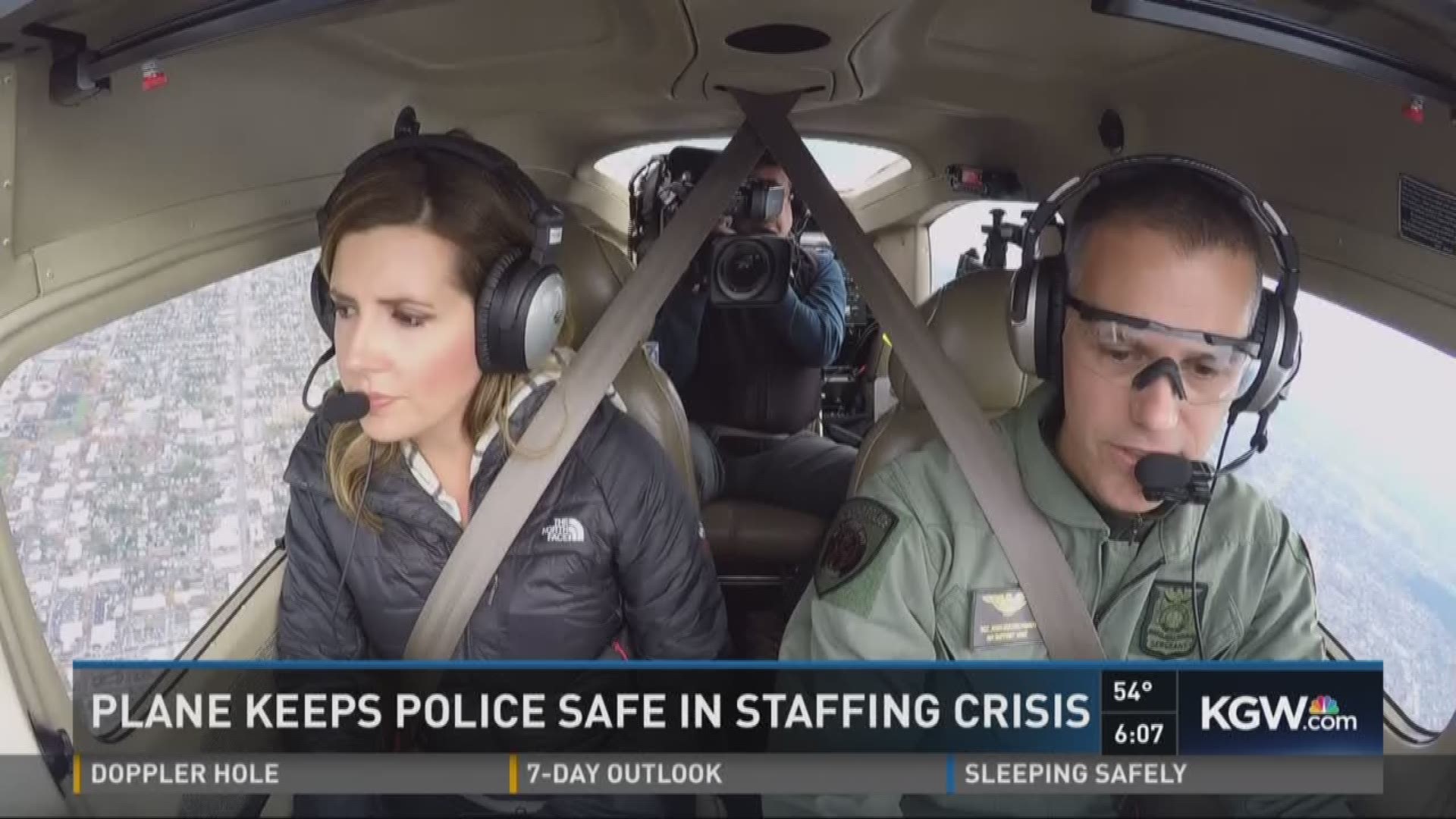PORTLAND, Ore. -- The Portland Police Bureau's aircraft patrol program, made up of two Cessna planes, ramped up after five Dallas, Texas police officers were killed by a sniper in July.
Since the shooting, departments around the country changed protocols. Now, Portland police put two officers per car, and their planes are up in the air almost every day. It's a crucial part of keeping officers safe, especially during a critical staffing shortage.
If a three-seat Cessna doesn't seem as tactical or slick as a helicopter for police, consider this: It costs $150 per hour to operate, versus $800-$1,000 for a helicopter. The Cessna can stay up in the air three times longer, and it's a lot quieter.
The Bureau's two planes and equipment, like thermal imaging Flir cameras, are funded by federal grants.
Luckily for Portland Police Sergeant Josh Goldschmidt, being a police officer and a pilot were two of his dream jobs, because he's flying now more than ever.
Goldschmidt was overhead in February, sizing up the $24 million marina fire on Hayden Island that burned 350 boats. But high risk traffic stops and pursuits, when police could be in danger, is his bread and butter.

"In the current environment, officers really aren't willing to take those kinds of risks when we don't know why a person is trying to elude us, so frequently they'll terminate those," Sgt. Goldschmidt explained. "With the airplane we don't have to terminate it. We can tell patrol cars to call it off, and we'll continue to follow the suspect vehicle until they get out and then we can direct officers to a location where they could bring the person into custody."
An eye in the sky brings efficiency and time savings to a police department that's in a staffing crisis. 86 positions are currently vacant, and nearly 400 officers are set to retire within the next five years. Couple that with public backlash, and police and 911 callers who need them, are at a safety risk.
"It takes officers on the ground time to respond to calls and when they're high priority calls, they're running with lights and sirens, having to clear intersections and there's a risk involved with that. Whereas we can cut that response time in half from almost anywhere in the city," the Sgt. said.
Goldschmidt flies while another police officer, called a Tactical Flight Officer, who mans the police radio and mapping equipment from the backseat. They can spot bad guys running from SWAT officers with warrants, track car chases or spot hazards to radio to police on the ground.
"Literally, the call comes out and we just turn the camera system to the address, and we now have eyes on the location that officers are responding to, it's instant," he said.
More departments facing budget cuts across the country are turning to fixed wing aircraft like this. Pilots like Goldschmidt, are just honored to help his co-workers.
"I've been doing police work for 23 years and in that time, I've had co-workers almost killed, or killed in car accidents, I've had them stabbed and shot, and I'm at a point in my career that what I really want to do, is make sure my co-workers and friends go home safely at the end of the day, and this is just one way we can do that," Sgt. Goldschmidt said.

